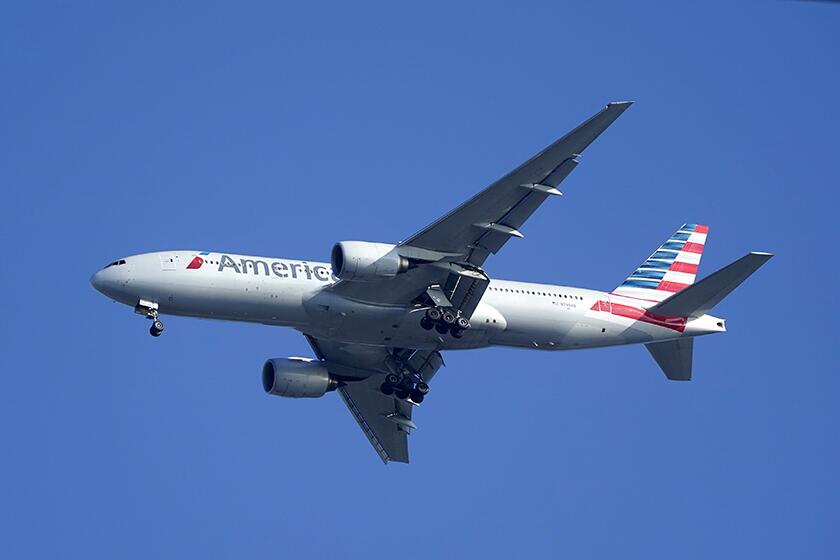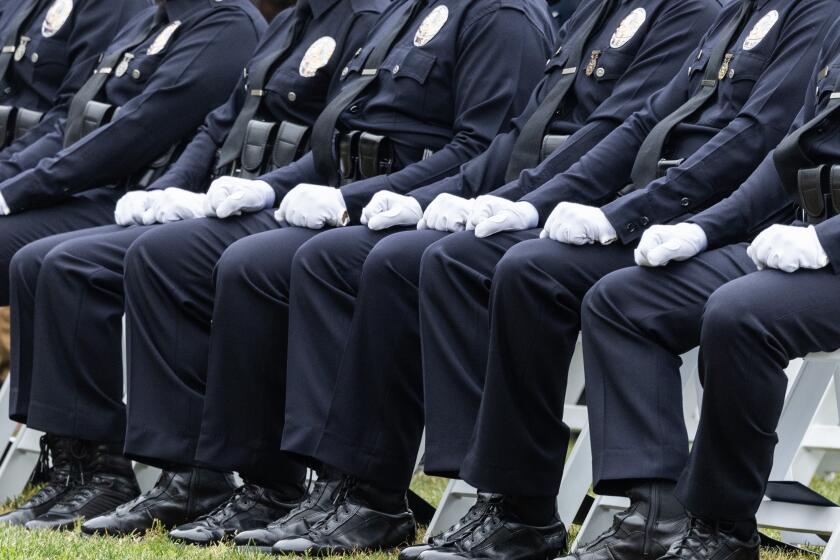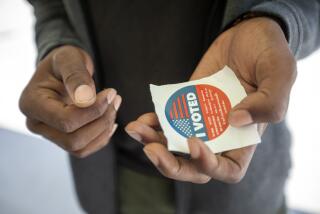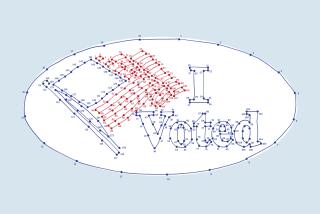There is a new deadline to get the Real ID. Here’s why you need one
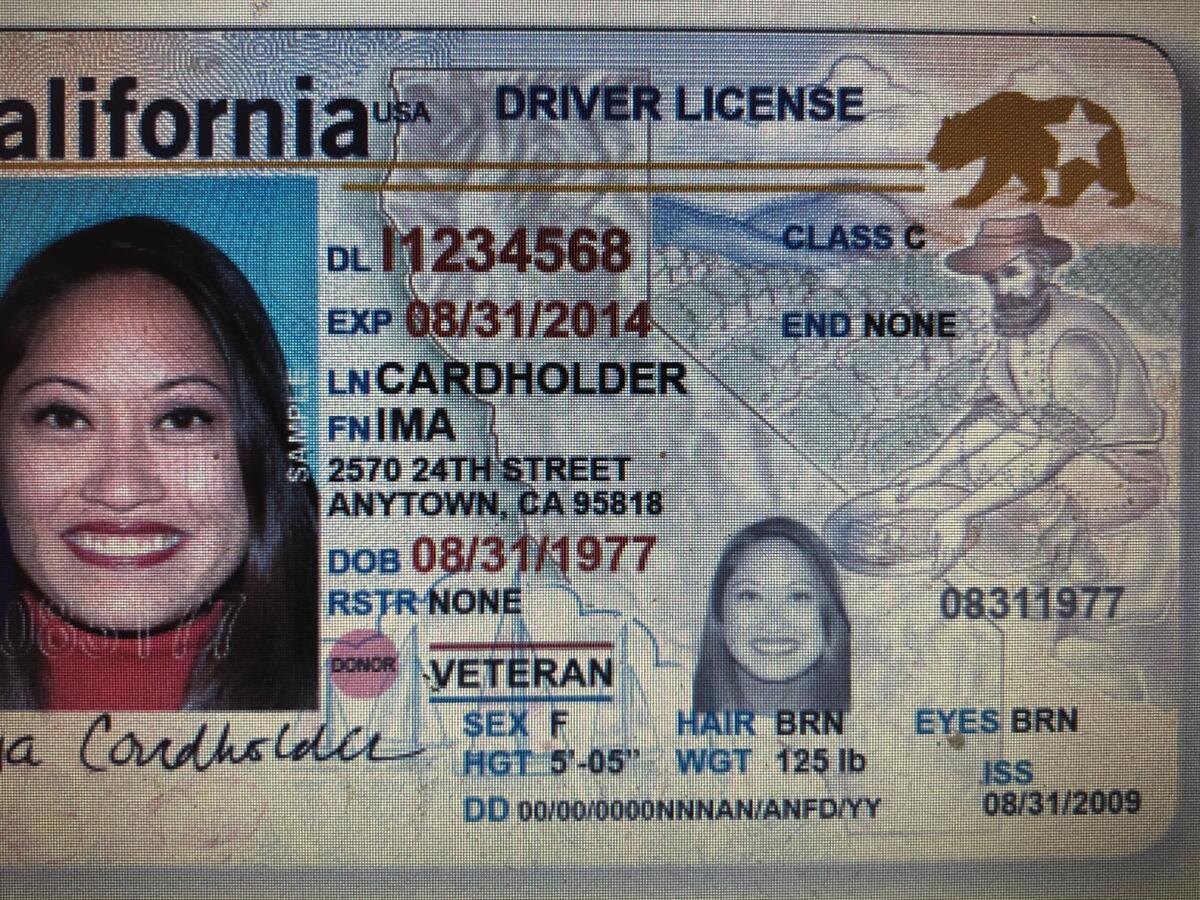
- Share via
Pushed out of mind by a handful of deadline delays, Californians now face another drop-dead date to apply for the Real ID if they plan to travel domestically next year.
The goal of the Real ID Act, approved by Congress in 2005, is to improve security and minimize fraud in the aftermath of the 9/11 terrorist attacks. The Real ID was designed to create a nationwide standard for identification because some state driver’s licenses were not acceptable to board commercial aircraft or cross borders in other states.
Since the planned implementation date was originally announced for 2008, it has been delayed several times, most recently by the pandemic and backlogs at DMV offices.
The current deadline to get the ID is May 7, 2025, and there are no signs of another deferment.
TSA is unveiling a self-service security screening system at the Harry Reid International Airport in Las Vegas.
With less than a year to meet the deadline, nearly 17 million Californians — in a state with a population of nearly 40 million — have the Real ID, according to recent data by the California Department of Motor Vehicles.
That suggests there are many people who haven’t gotten Real IDs and might be wondering if they must.
Why do I need the Real ID?
Starting next year, if you’re 18 or older, the Real ID will be accepted as a form of identification to board domestic flights and enter secure federal facilities, such as military bases and federal courthouses. The traditional identification cards or driver’s licenses offered by the DMV won’t be accepted for such uses.
A Real ID has the image of a bear and a star in the top right-hand corner that indicates it’s federally compliant. A regular identification card has the phrase “Federal Limits Apply,” in the same area of the card.
If you get to an airport and show Transportation Security Administration staff a regular California ID or state-issued driver’s license, you will not be permitted through the security checkpoint, according to the U.S. Department of Homeland Security.
The TSA accepts other forms of identification. See its website for details.
How do I get a Real ID?
To get a Real ID you have to apply for one through your local Department of Motor Vehicles office.
Start the process by visiting the DMV website and review the document checklist for the required proof you’ll need to prove your identity and residency.
You must provide one of the following to prove your identity:
- Valid U.S. passport or passport card
- Original or certified copy of U.S birth certificate (issued by a city, county, or state vital statistics office). “Abbreviated” or “Abstract” certificates are not accepted.
- Valid permanent resident card
- Foreign passport with valid U.S. visa and approved I-94 form
- Certificate of naturalization or certificate of U.S. citizenship
- Certified copy of birth certificate from a U.S. territory
- Valid employment authorization document card or valid/expired EAD card with notice of action
- Valid permanent resident card with notice of action or approval notice
- U.S. certificate of birth abroad or consular report of birth abroad of U.S. citizen
- Valid foreign passport stamped “Processed for I-551”
- Documents reflecting Temporary Protected Status benefit eligibility
You current full name must match the name on your identifying document.
Airlines will be required to automatically refund passengers for major flight changes under DOT rule
The new Department of Transportation rule will go into effect in about six months, Secretary Pete Buttigieg said.
You must provide one of the following to prove your residency:
- Home utility bill or phone bill
- Records from any state or national bank, state or federal savings association, trust company, industrial loan company, state or federal credit union, or any institution or entity that has issued a credit card
- Insurance documents, including medical, dental, vision, life, home, rental or vehicle
- Medical documents
- Mortgage bill
- Employment documents
- Tax return (either Internal Revenue Service or California Franchise Tax Board faith-based document)
- Rental or lease agreement with the signature of the landlord and the tenant
- School documents issued by a public or private primary, secondary, or post-secondary institution, college, or university that includes the applicant’s date of birth.
- Change of address confirmation by the U.S. Postal Service
- Property tax bill or statement
- Deed or title to residential real property
- Voter registration confirmation letter or postcard issued by the California secretary of state or a local California county elections officer
- Court documents that list the applicant as a resident of California
These documents must have the first and last name as well as mailing address that will be listed on the Real ID.
California Atty. Gen. Rob Bonta will stop requiring police officers to disclose their own gender identity when they report details of traffic stops to the state.
If your name is not listed on the residency documents you can use a birth certificate, marriage license or domestic partner registration document to prove your relationship with the person listed on the residency document.
You have your proof of identity and residency documents, now it’s time to apply.
You can complete the Real ID application online, which takes less than 10 minutes.
When your application is finished you’ll need to schedule a visit with a DMV office to show your documents and complete the application process.
Before your appointment, have your supporting documents, application confirmation and $35 to pay the fee for the ID.
More to Read
Sign up for Essential California
The most important California stories and recommendations in your inbox every morning.
You may occasionally receive promotional content from the Los Angeles Times.

